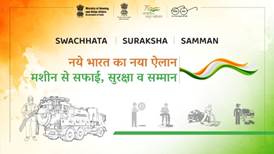
508 districts in country are free of manual scavenging: Ministry report
The Union Social Justice and Empowerment Ministry said that only 508 out of the 766 districts in the country have been declared free of manual-scavenging.
508 districts in country are free of manual scavenging: Ministry report
• The Union Social Justice and Empowerment Minsitry said that only 508 out of the 766 districts in the country have been declared free of manual-scavenging.
• Earlier, senior officials had differentiated manual scavenging from the hazardous cleaning of sewers, maintaining that the surveys conducted in 2013 and 2018 had identified all the manual scavengers (about 58,000) and hence, manual scavenging no longer existed in the country.
• According to the scheme for rehabilitation of manual scavengers, the identified workers have been given a one-time cash payout and some have been connected to skill training programmes. The scheme has now been merged with the NAMASTE scheme for 100% mechanisation of sewer work. The 2023-24 Budget allocated 100 crore for NAMASTE.
• The scheme, in collaboration with the MoHUA, will require over 4,800 urban local bodies across the country to identify and profile all septic tank/sewage workers, provide them operational training, and safety equipment. They will be signed up for health insurance under the Ayushman Bharat scheme also, apart from capital subsidies.
Manual scavenging is defined as “the removal of human excrement from public streets and dry latrines, cleaning septic tanks, gutters and sewers”.
India banned the practice under the Prohibition of Employment as Manual Scavengers and their Rehabilitation Act, 2013 (PEMSR).
